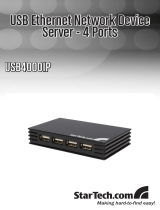
Instruction Manual
ii
System Ident ............................................................................................................................................... 24
Security ......................................................................................................................................................... 26
Compatibility .............................................................................................................................................. 26
SNMP ............................................................................................................................................................. 27
RADIUS .......................................................................................................................................................... 27
Modem .......................................................................................................................................................... 28
Time/Date .................................................................................................................................................... 28
Firmware ....................................................................................................................................................... 28
Auto Self Upgrade.....................................................................................................................................29
Manual Upload........................................................................................................................................... 29
Purchase Options ...................................................................................................................................... 29
Info Functions .........................................................................................30
Status ............................................................................................................................................................. 30
Port Numbers ............................................................................................................................................. 31
Help Menu ................................................................................................................................................... 32
Site map Menu ........................................................................................................................................... 32
Copyright Menu ......................................................................................................................................... 32
The VNC Interface ..................................................................................32
Native VNC Client ...................................................................................................................................... 33
Using the VNC Menu ............................................................................................................................... 34
Bribar Feature ............................................................................................................................................ 34
VirtKeys Menu ............................................................................................................................................40
Video Tuning Menu .................................................................................................................................. 41
Changes/frame .......................................................................................................................................... 41
Picture Positioning.................................................................................................................................... 41
Color Oset .................................................................................................................................................42
Advanced .................................................................................................................................................... 42
Sampling Phase ......................................................................................................................................... 42
Noise Filter ................................................................................................................................................... 42
























